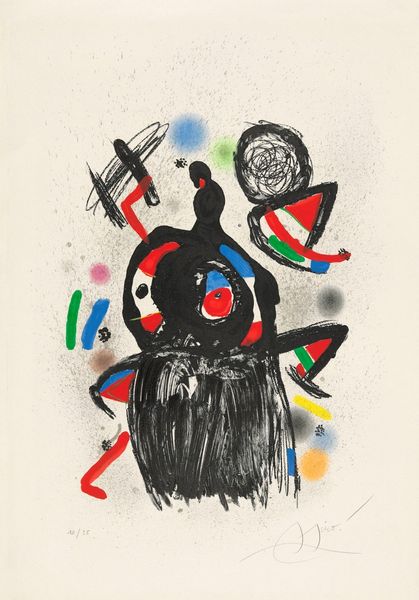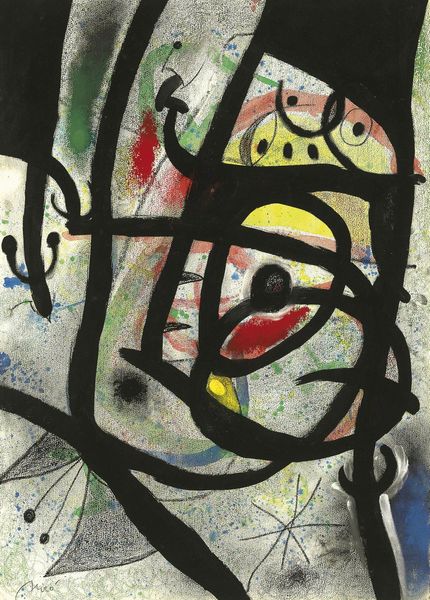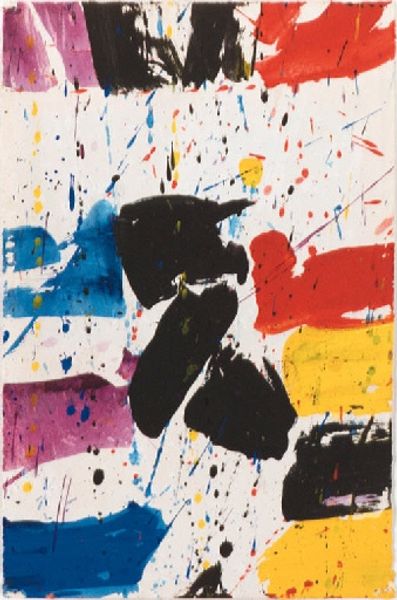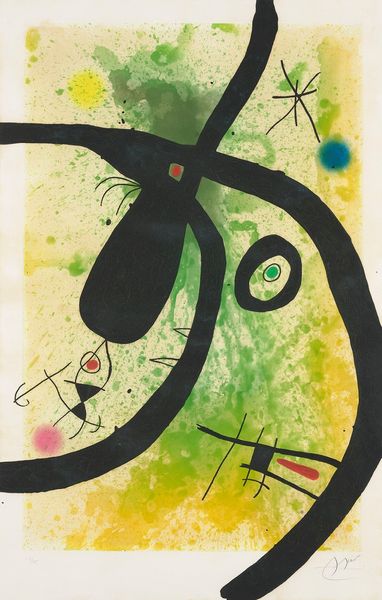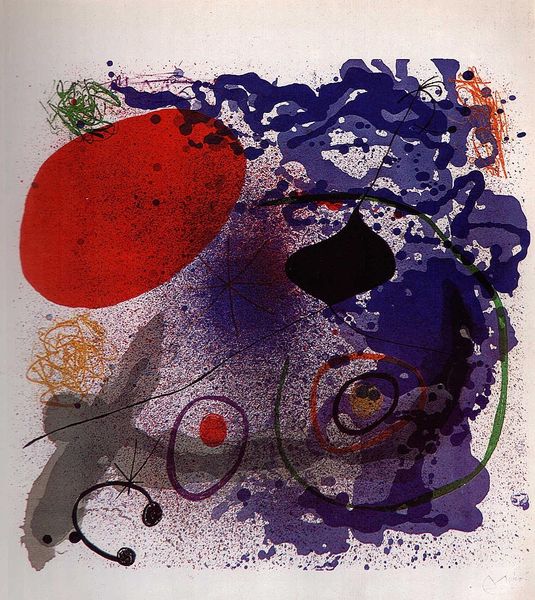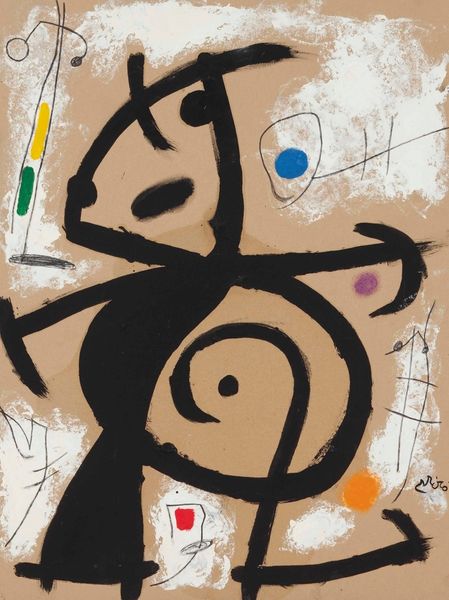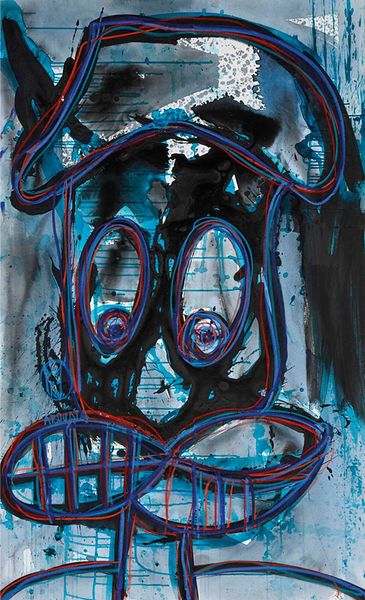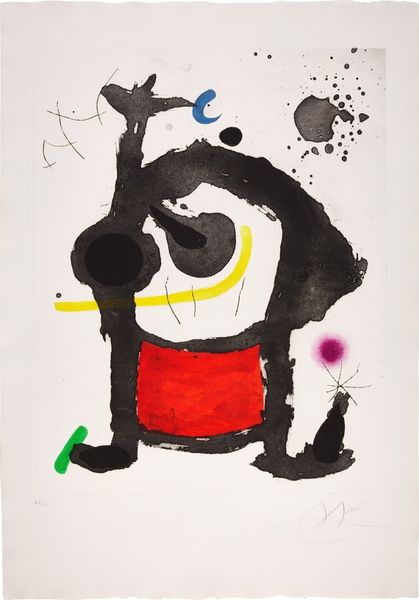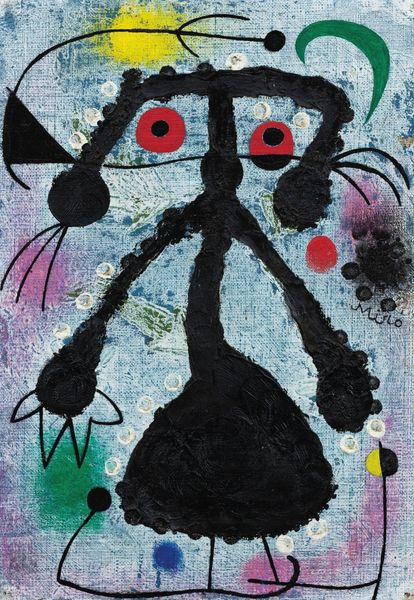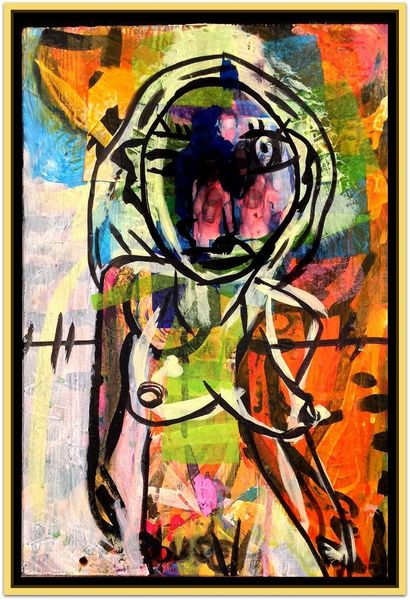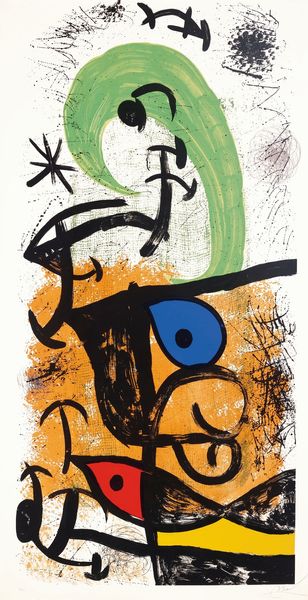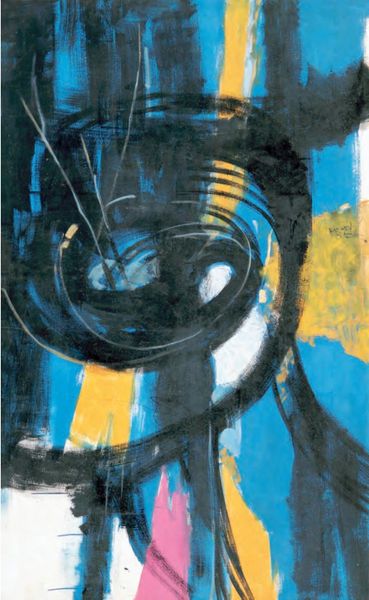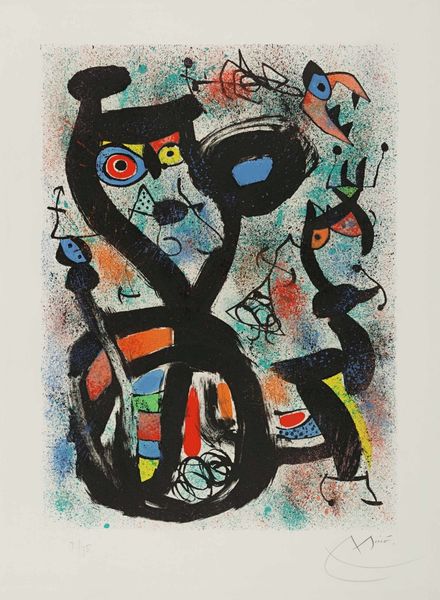
Copyright: Modern Artists: Artvee
Curator: Immediately, it feels like joyful chaos! There's something playful yet also quite arresting about these bold black forms against the bright colors. Editor: Today we're considering Joan Miró's 1967 painting, "Femme, oiseaux, étoile II," an acrylic on canvas work that encapsulates the symbolic language he developed throughout his career. Curator: Right, those quintessential Miró elements—the woman, the birds, the star… But it’s more than just the subjects; it’s the *feeling* it gives me. These shapes… those could be symbols in some ancient, forgotten language. Are they joyous, are they foreboding? Or both? Editor: Absolutely! It speaks to a collective visual memory. Consider how Miró reduces these complex concepts—woman, bird, star—into near-universal symbols. The 'femme' isn't a portrait but an idea of femininity. Birds evoke freedom, while the star becomes an emblem of hope or destiny. We might call it naive art, graffiti, or a form of personal glyphs, yet his abstract vocabulary becomes so potent, so concise, that you can’t help but grasp some intended emotionality behind it. Curator: And there's that gorgeous tension created by the colors – the cool blue contrasting with the streaks of warm reds and yellows! They drip and flow, it’s like seeing pure emotion on the canvas, those broad forms like vessels of emotional experience. What purpose does color play? Editor: Miró's use of color reinforces the symbolic associations: that blue might speak to spirituality or imagination, the vibrant red to passion or instinct, and the yellow maybe intellect or divinity. It feels connected to ritualistic practice somehow; primitive symbolism used in sacred traditions. Even the black—usually read as negative— takes on life because of its texture and strong graphic qualities. Curator: It's that visual grounding and immediacy; his shapes feel archetypal, like universal concepts dredged up from the unconsciousness and reimagined, that blend surrealism, abstraction, symbolism, all coalescing into Miró’s unique visual lexicon. A window into the human psyche that is still vital and thought-provoking to this day. Editor: Ultimately, reflecting on its symbols and abstraction invites us to explore these questions without dictating meaning. It creates its own logic system. I leave this piece considering its open dialogue with my own feelings and thoughts on my experience of visual perception and how symbols themselves become fluid in our modern era.
Comments
No comments
Be the first to comment and join the conversation on the ultimate creative platform.
